
Jacobitism was a political ideology advocating the restoration of the Catholic House of Stuart to the British throne. When James II of England chose exile after the November 1688 Glorious Revolution, the Parliament of England ruled he had "abandoned" the English throne, which was given to his Protestant daughter Mary II of England, and her husband William III. On the same basis, in April the Scottish Convention awarded Mary and William the throne of Scotland.

James Francis Edward Stuart was the House of Stuart claimant to the thrones of England, Ireland and Scotland from 1701 until his death in 1766. The only son of James II of England and his second wife, Mary of Modena, he was Prince of Wales and heir until his Catholic father was deposed and exiled in the Glorious Revolution of 1688. His Protestant half-sister Mary II and her husband William III became co-monarchs. As a Catholic, he was subsequently excluded from the succession by the Act of Settlement 1701.

Lieutenant-General William Cadogan, 1st Earl Cadogan, was a British Army officer, diplomat, politician and peer. He began his active military service during the Williamite War in Ireland in 1689 and ended it with the suppression of the 1715 Jacobite Rebellion. A close associate and confidant of the Duke of Marlborough, he was also a diplomat and Whig politician who sat in the English and British House of Commons from 1705 until 1716, when he was raised to the peerage as Baron Cadogan.
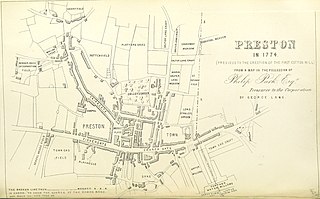
The Battle of Preston was the final action of the Jacobite rising of 1715, an attempt to put James Francis Edward Stuart on the British throne in place of George I. After two days of street-fighting, the Jacobite commander Thomas Forster surrendered to government troops under General Charles Wills. It was arguably the last battle fought on English soil.

The Williamite War in Ireland took place from March 1689 to October 1691. Fought by Jacobite supporters of James II and his successor, William III, it resulted in a Williamite victory. It is generally viewed as a related conflict of the 1688 to 1697 Nine Years' War.
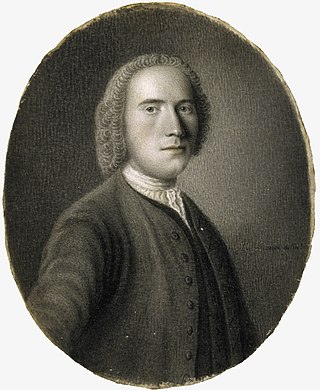
Lord George Murray, sixth son of John Murray, 1st Duke of Atholl, was a Scottish nobleman and soldier who took part in the Jacobite rebellions of 1715 and 1719 and played a senior role in that of 1745.

William Widdrington, 4th Baron Widdrington was an English peer who was stripped of his titles by the Crown for being involved in the Jacobite rising of 1715.
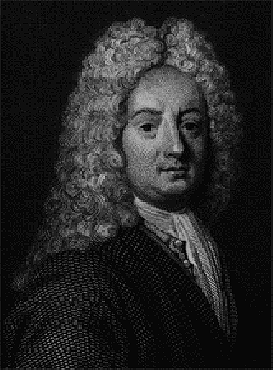
Thomas Forster, of Adderstone Hall, Northumberland, was an English landowner and Tory politician who sat in the House of Commons from 1708 to 1716. He served as a general of the Jacobite army in the 1715 Uprising and subsequently fled to France.
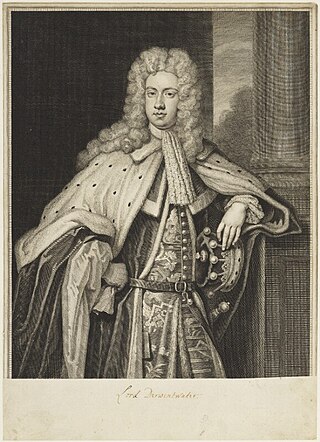
James Radclyffe, 3rd Earl of Derwentwater was an English peer who participated in the Jacobite rising of 1715 and was executed for treason.
Events from the year 1716 in Great Britain.

General Sir Charles Wills was a British Army officer and politician who served as Lieutenant-General of the Ordnance from 1718 to 1741. He also sat in the British House of Commons from 1718 to 1741, representing the constituency of Totnes.

The Jacobite rising of 1745 was an attempt by Charles Edward Stuart to regain the British throne for his father, James Francis Edward Stuart. It took place during the War of the Austrian Succession, when the bulk of the British Army was fighting in mainland Europe, and proved to be the last in a series of revolts that began in March 1689, with major outbreaks in 1715 and 1719.
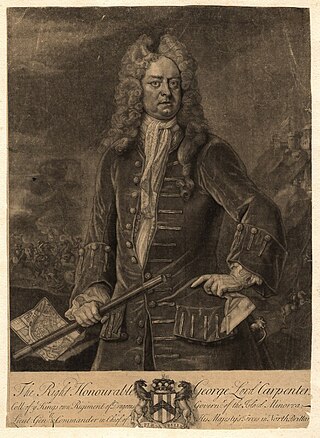
Lieutenant-General George Carpenter, 1st Baron Carpenter was a British Army officer, Whig politician and peer. He served as Commander-in-Chief, Scotland from 1716 to 1724 and as a member of parliament from 1715 to 1727.

The Manchester Regiment was a Jacobite unit raised during the 1745 Rebellion and the only significant number of English recruits willing to fight for Charles Edward Stuart in his attempt to regain the British throne for his father. Raised in late November 1745, the majority were captured in December at Carlisle; eleven officers and sixteen members of the rank and file were executed in 1746, over a quarter of all those executed for their role in the Rising.
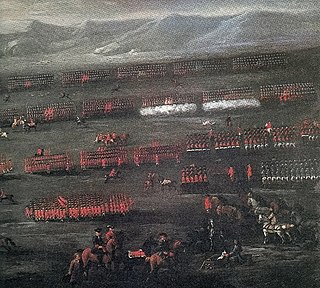
The Jacobite rising of 1715 was the attempt by James Edward Stuart to regain the thrones of England, Ireland and Scotland for the exiled Stuarts.

The Atterbury Plot was a conspiracy led by Francis Atterbury, Bishop of Rochester and Dean of Westminster, aimed at the restoration of the House of Stuart to the throne of Great Britain. It came some years after the unsuccessful Jacobite rising of 1715 and Jacobite rising of 1719, at a time when the Whig government of the new Hanoverian king was deeply unpopular.
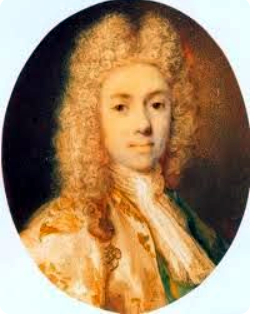
William Murray, Marquess of Tullibardine was a Scottish nobleman and Jacobite who took part in the rebellions of 1715, 1719, and 1745.

The Jacobite Rising of 1719 was a failed attempt to restore the exiled James Francis Edward Stuart to the throne of Great Britain. Part of a series of Jacobite risings between 1689 and 1745, it was supported by Spain, then at war with Britain during the War of the Quadruple Alliance.

Joseph Wightman was a British Army officer who is best noted for his role in the suppression of the 1715 and 1719 Jacobite rebellions. Wightman also participated in the Nine Years' War and the War of the Spanish Succession.
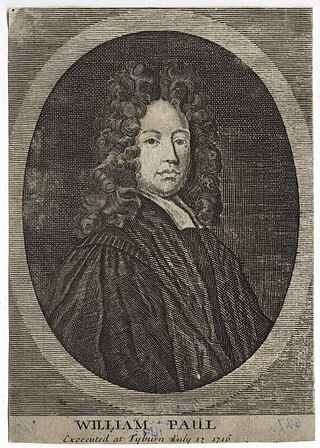
William Paul (1678–1716), Vicar of Orton, was a nonjuring Church of England clergyman and Jacobite sympathizer, executed for treason.


















